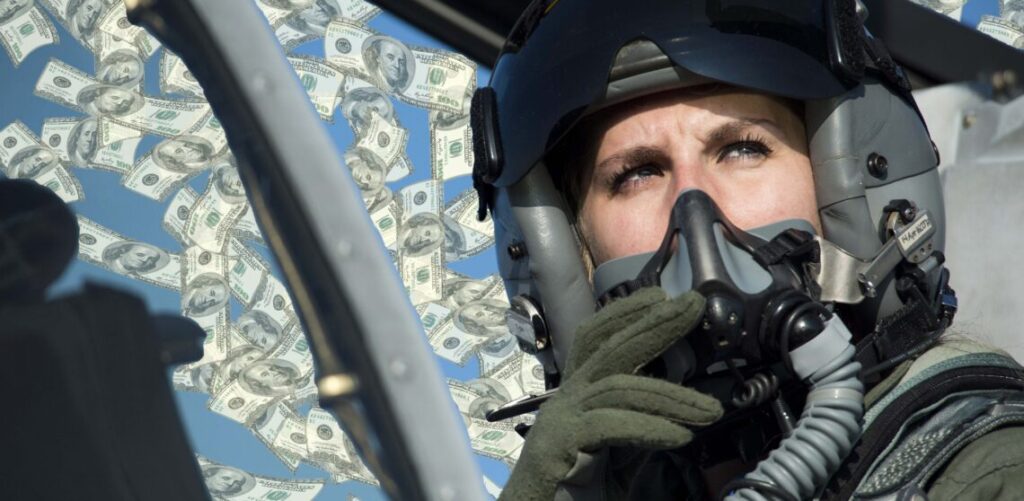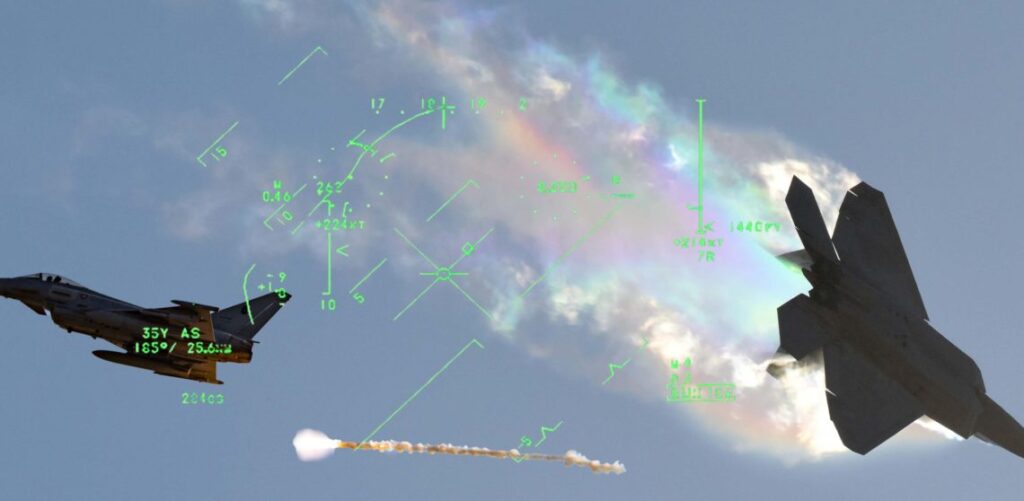This article by Mac Caltrider was originally published by Coffee or Die.
US Army Air Forces fighter pilot Robin Olds jettisoned his P-38’s fuel drop tanks, hoping that shedding the excess weight would give him an edge against the 40 to 50 German Messerschmitts flying below him. It was August of 1944 and the battle for the skies over Europe was claiming approximately one in every three American airmen. As Olds dove toward the Luftwaffe planes, his engine died.
Hyperfocused on shooting down the enemy aircraft, Olds had forgotten to switch to his internal fuel tanks.

The American pilot opened fire on the enemy formation while flying “dead stick mode” — without working engines. He scored a hit, fatally damaging a Messerschmitt Bf 109. After restarting his engines, Olds shot down three more of the German planes before the day was over.
It was only his third month in theater but Olds was already the first ace in his squadron, and his legendary career was just starting.
Related: Watch this rare combat footage of B-17 bombers raiding Germany
Gaining grit on West Point’s gridiron
Olds was born in Honolulu, Hawaii, on July 14, 1922. His father was a captain in the Army Air Force. Growing up on military bases made an early impression on Olds, who first took to the skies at the age of 8 in his father’s open-cockpit biplane. By the time he was 12, Olds was determined to secure an appointment to the United States Military Academy at West Point and follow in his father’s footsteps as an aviator.
When Germany invaded Poland in 1939, Olds didn’t want to go to college and risk missing the fight, so he tried to enlist in the Canadian Air Force. His father refused to sign the necessary paperwork. Olds then attended a prep school to help him get into West Point.

In 1940 Olds’ academic preparation paid off, and he was accepted to the prestigious military academy. He took a brief hiatus following the attack on Pearl Harbor to attend flight school in Oklahoma but returned to West Point a year later.
While at West Point, the 6-foot-2-inch cadet made a name for himself playing football. Olds played offensive and defensive tackle during two seasons. In 1942, Collier’s Weekly named him lineman of the year and he was selected as an All-American. However, he was not a perfect cadet. Caught drinking on leave, he was demoted but graduated in 1943 as part of a wartime-abbreviated curriculum.
Double Ace: Two tours, two airplanes, two Silver Stars
Olds got his first taste of combat in May 1944 while flying a P-38 Lightning fighter plane with the 479th Fighter Group. Three months later, he got his first two kills, two German Focke-Wulf Fw 190s. Nine days after that, he became the first ace in his unit when he shot down three Messerchmitts.
Related: Letters to Loretta: An American B-17 bomber versus Nazi fighters

In September of 1944, the 479th traded in their P-38s for the newer and faster P-51 Mustangs. Olds shot down another Focke-Wulf 190 before his squadron rotated back to the United States.
Two months after arriving home, Olds redeployed to Europe as the operations officer of the 434th Fighter Squadron. The young pilot was promoted to major and continued to wreak havoc on the Germans between January and April of 1945. By the time Olds’ combat service in World War II was over, the 22-year-old was credited with downing 13 enemy aircraft and destroying 11 more on the ground. He was awarded two Silver Stars and was the only pilot to become an ace in both the P-38 and the P-51.
MiG killer
When the Korean War began in 1950, Olds made several requests for a combat assignment but was stationed in Pittsburgh instead. He was so bitter about missing the war that he considered retiring from the Air Force but eventually had a change of heart. When the United States began sending troops to Vietnam in 1965, Olds was determined not to miss another fight.

In 1966, Olds — then a colonel — took command of the 8th Tactical Fighter Wing. In an unorthodox display of humility, Olds assigned himself under junior officers on the flight schedule. He challenged them to teach him new techniques for flying the F-4C Phantom II jet fighters.
Olds took to the new jets quickly and devised an ambitious plan for knocking out North Vietnam’s air power. Dubbed Operation Bolo, Olds’ plan involved disguising a formation of Phantoms as slower, more vulnerable bombers using different call signs and the same flight patterns as bombers.
When the North Vietnamese saw what they believed to be unescorted bombers, they took the bait. Olds’ gamble paid off. When North Vietnamese MiGs rose through the cloud cover to attack the formation, seven were shot down — nearly half of the opposing Air Force.
Over the course of several subsequent missions, Olds was credited with downing four Vietnamese MiGs, making him a triple ace. When he learned the secretary of the Air Force intended to relieve him of command and use him as a publicity asset if he recorded a fifth kill, Olds stopped shooting. He spent the rest of the Vietnam War assisting his wingmen in scoring their own aerial victories.
It was during this period that Olds grew the legendary mustache that he is often remembered for. The waxed handlebar mustache was blatantly out of Air Force regulation, but the triple ace got away with it. According to Olds, the flamboyant facial hair was an act of defiance. It took on a life of its own and inspired the rest of the airmen in the 8th Tactical Fighter Wing to grow their own.

Upon returning from Vietnam, Olds finally shaved the ’stache when Air Force Chief of Staff Gen. John P. McConnell told him to take it off.
Today, Olds’ legendary mustache lives on. Every March, airmen grow out their mustaches as part of “Mustache Madness” to honor the late triple ace.
Olds went on to serve as the commandant of cadets at the Air Force Academy and rose to the rank of brigadier general. In 1985 he was inducted into the National Football Foundation Hall of Fame. Sixteen years later Olds was inducted into the National Aviation Hall of Fame, making him the only person to be inducted into both. He died in 2007 from prostate cancer and congestive heart failure, leaving behind a legacy as one of the most accomplished pilots in American history.
Feature Image: Triple ace Robin Olds (Wikimedia Commons)
Read more from Sandboxx News
- US Air Force AI pilot flies real F-16 in simulated dogfights
- More than missing guns: Why America lost dogfights over Vietnam
- Letters to Loretta: A series into the power of humanity to persevere during war
- DARPA’s Project ICEMAN could figure out what’s bugging fighter pilots
- What it takes to join military aviation’s most exclusive club




